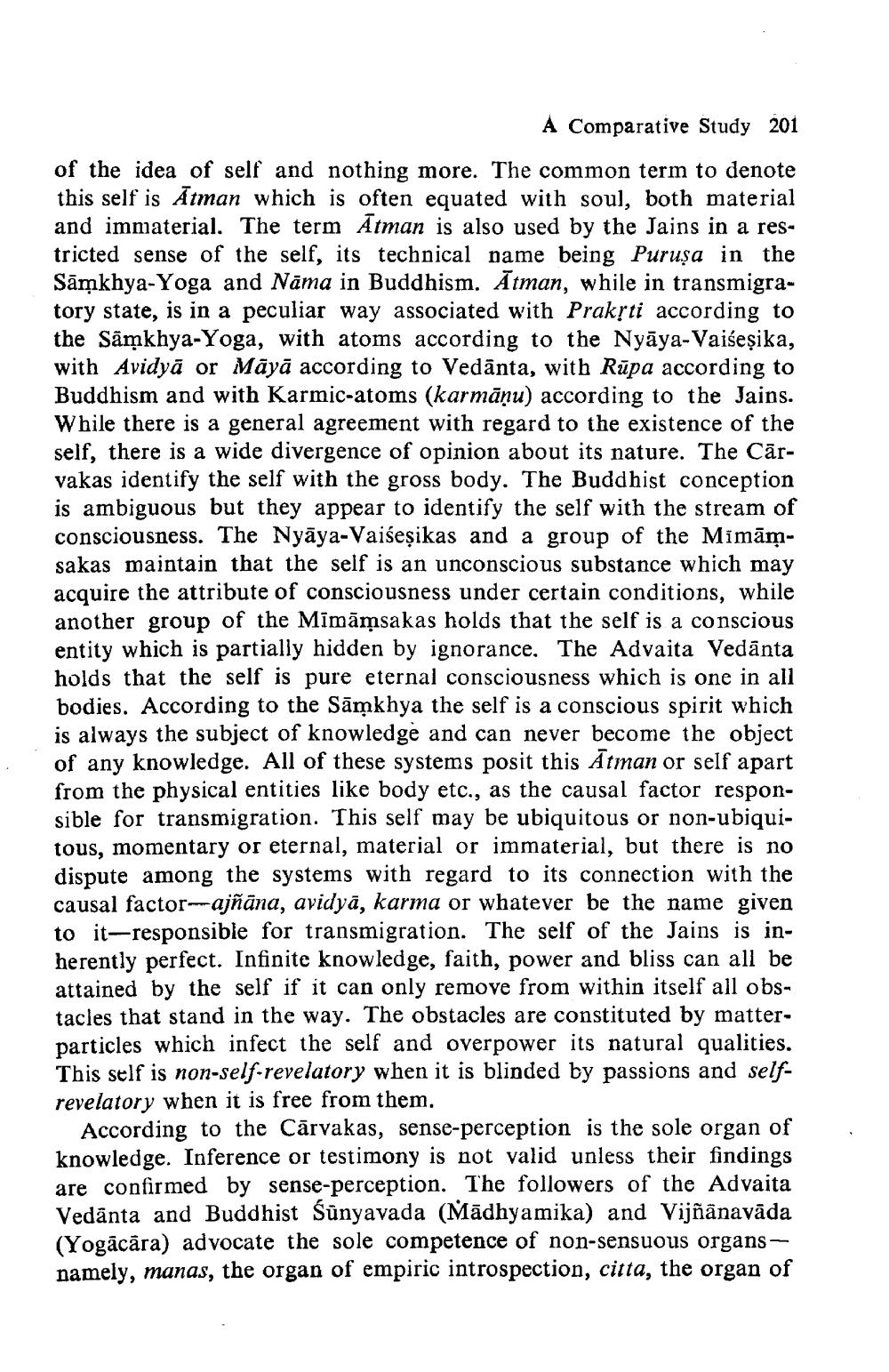________________
A Comparative Study 201
of the idea of self and nothing more. The common term to denote this self is Ātman which is often equated with soul, both material and immaterial. The term Ātman is also used by the Jains in a restricted sense of the self, its technical name being Puruşa in the Sāmkhya-Yoga and Nāma in Buddhism. Atman, while in transmigratory state, is in a peculiar way associated with Prakyti according to the Sāmkhya-Yoga, with atoms according to the Nyāya-Vaiseșika, with Avidyā or Māyā according to Vedānta, with Rūpa according to Buddhism and with Karmic-atoms (karmāņu) according to the Jains. While there is a general agreement with regard to the existence of the self, there is a wide divergence of opinion about its nature. The Carvakas identify the self with the gross body. The Buddhist conception is ambiguous but they appear to identify the self with the stream of consciousness. The Nyāya-Vaiseșikas and a group of the Mimāmsakas maintain that the self is an unconscious substance which may acquire the attribute of consciousness under certain conditions, while another group of the Mīmāmsakas holds that the self is a conscious entity which is partially hidden by ignorance. The Advaita Vedānta holds that the self is pure eternal consciousness which is one in all bodies. According to the Sāmkhya the self is a conscious spirit which is always the subject of knowledge and can never become the object of any knowledge. All of these systems posit this Ātman or self apart from the physical entities like body etc., as the causal factor responsible for transmigration. This self may be ubiquitous or non-ubiquitous, momentary or eternal, material or immaterial, but there is no dispute among the systems with regard to its connection with the causal factor ajñāna, avidyā, karma or whatever be the name given to it--responsible for transmigration. The self of the Jains is inherently perfect. Infinite knowledge, faith, power and bliss can all be attained by the self if it can only remove from within itself all obstacles that stand in the way. The obstacles are constituted by matterparticles which infect the self and overpower its natural qualities. This self is non-self-revelatory when it is blinded by passions and selfrevelatory when it is free from them.
According to the Cārvakas, sense-perception is the sole organ of knowledge. Inference or testimony is not valid unless their findings are confirmed by sense-perception. The followers of the Advaita Vedānta and Buddhist Sünyavada (Mādhyamika) and Vijñānavāda (Yogācāra) advocate the sole competence of non-sensuous organsnamely, manas, the organ of empiric introspection, citta, the organ of




